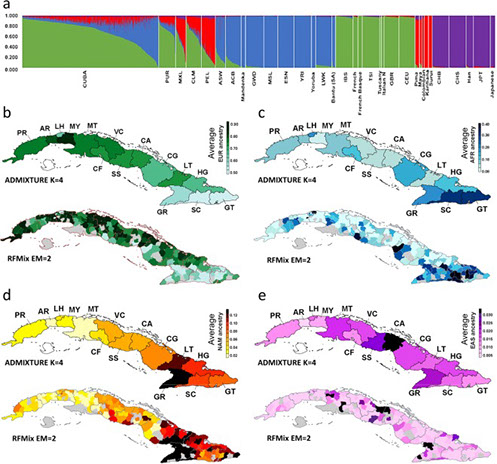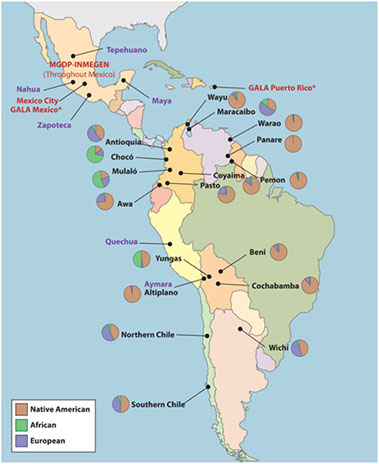Admixture: Anthropological and biomedical applications
Studying admixture is important from a historical and anthropological perspective. Migration of individuals and populations (and subsequent mixing) has always played an important role in the evolutionary history of humans. Since the XVth century, these migrations have occurred at a more global scale. This is particularly the case for the Americas. Here, populations that were previously isolated for generations came into contact and many persons currently living in North, Central and South America can trace their ancestry to different continents. We can reconstruct and interpret this history of migrations using genetic markers. A very complete perspective can be obtained when analyzing autosomal markers, maternally transmitted mtDNA markers and Y-chromosome specific markers, which are transmitted from fathers to sons. I have been involved in many studies in populations throughout the Americas using genetic markers to infer population history (as an example, see Fortes-Lima et al. 2018. Scientific Reports 8:11422).
From a biomedical perspective, I have participated in efforts to develop panels of Ancestry Informative Markers (AIMs) to control for the effects of population stratification in association studies in recently admixed populations. With these panels, it is possible to minimize the risk of false positives in candidate gene studies, or research efforts to replicate signals observed in genome-wide association studies (as an example, see Galanter et al. 2012, PLoS Genetics 8: e1002554). AIMs can also be used to map disease genes, using a method known as admixture mapping (Parra et al. 2017. PLoS One 12:e0172880).
Finally, in addition to my research in the Americas, I have collaborated with Professor Manjari Jonnalagadda, from Symbiosis School for Liberal Arts in Pune, in a study that provided insights on the demographic history of tribal and caste groups from West Maharashtra (India) using genome-wide data (Debortoli et al. 2020. Scientific Reports 10:10075).

Genetic diversity across Cuba. (a) Bar-plot of four-way continental ancestry proportions in Cuban individuals and worldwide individuals. Geographic distribution of (b) European (or green cluster), (c) African (or blue cluster), (d) Native American (or red cluster), and (e) East Asian (or purple cluster) ancestries across Cuban provinces (map on the top), and across Cuban municipalities (map on the bottom) (From Fortes-Lima et al. 2018. Scientific Reports 8:11422).

Map showing admixture contributions estimated with the LACE AIMs panel in numerous populations throughout the Americas (From Galanter et al., PLoS Genetics 8: e1002554)

